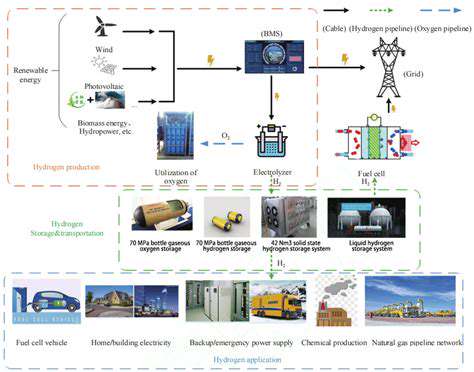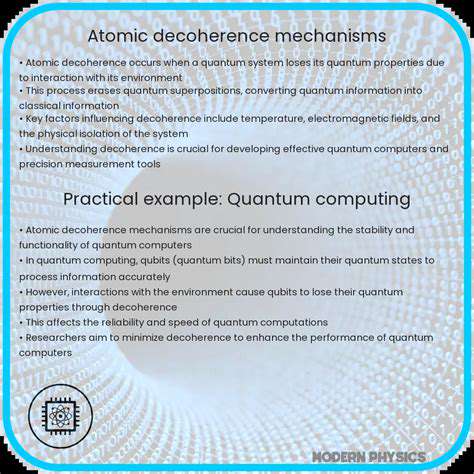Hydrogen Energy Storage: Production, Storage, and Applications
Hydrogen Storage Technologies: Options and Challenges

Hydrogen Storage Methods: An Overview
Storing hydrogen efficiently remains one of the most critical challenges in implementing hydrogen energy solutions across various industries. Multiple storage approaches exist, each presenting unique trade-offs between safety parameters, energy efficiency, and economic feasibility.
The fundamental obstacle involves developing storage solutions capable of handling substantial hydrogen quantities while maintaining practical pressure and temperature conditions. This technical barrier significantly impacts hydrogen adoption rates, prompting continuous research efforts to refine existing methodologies.
Physical Storage Approaches
Physical storage techniques maintain hydrogen in either gaseous or liquid states. Compressed gas storage utilizes high-pressure containment vessels, typically constructed from advanced metal alloys. While this represents a mature technology, concerns persist regarding tank durability and the energy requirements for compression.
Cryogenic storage solutions achieve remarkable density improvements by maintaining hydrogen at extremely low temperatures (-253°C). However, the specialized infrastructure required for liquefaction and containment presents substantial capital investment challenges.
Chemical Storage Solutions
Chemical storage approaches bind hydrogen within molecular structures of various compounds. Metal hydrides demonstrate particular promise, with certain alloys capable of reversible hydrogen absorption and release cycles. These materials can achieve storage densities exceeding conventional physical methods.
Regeneration processes for chemical storage systems often demand significant energy inputs, creating operational complexity. Current materials research focuses on developing more efficient hydride compounds with improved thermodynamic properties.
Surface Adsorption Techniques
Adsorption-based storage utilizes porous materials with extensive surface areas, such as advanced metal-organic frameworks. These nanostructured materials can physisorb hydrogen molecules under moderate conditions, offering potential advantages for distributed applications.
Optimizing adsorption kinetics and capacity remains the primary technical challenge for this approach. Recent developments in nanomaterial engineering show promise for enhancing these critical performance parameters.
Carbon-Based Storage Systems
Carbon nanostructures, including graphene derivatives and nanotubes, present unique opportunities for hydrogen containment. Their exceptional surface-to-volume ratios and tunable pore structures enable innovative storage mechanisms at the nanoscale.
The practical implementation of carbon-based storage requires breakthroughs in hydrogen uptake rates and binding energies. Current research explores various functionalization strategies to improve these characteristics.
Infrastructure Development Needs
Establishing comprehensive hydrogen infrastructure demands coordinated development of specialized containment systems, distribution networks, and safety protocols. The unique properties of hydrogen necessitate customized solutions at every stage of the value chain.
Capital requirements for infrastructure development represent a major consideration in hydrogen adoption economics. Strategic planning must balance technical requirements with financial viability to enable widespread implementation.
Environmental Impact and Future Prospects
Production Environmental Considerations
The environmental implications of hydrogen production vary dramatically depending on feedstock and energy sources. Renewable-powered electrolysis demonstrates superior sustainability credentials compared to fossil-based methods. However, the complete environmental assessment must account for multiple factors including:
- Energy source carbon intensity
- Water resource requirements
- Material lifecycles for production equipment
Steam methane reforming currently dominates industrial hydrogen production but generates substantial CO2 emissions. Carbon capture solutions can mitigate these impacts but introduce additional complexity and cost considerations.
Technological Evolution Pathways
The hydrogen sector stands at an inflection point with multiple parallel development trajectories:
- Electrolysis advancements: Improving efficiency through novel catalyst materials and membrane technologies
- Renewable integration: Developing synergies with intermittent renewable generation
- Storage innovations: Enhancing density and safety characteristics
Transportation applications face particular challenges regarding refueling infrastructure and onboard storage solutions. Industrial applications may prove more immediately viable due to centralized requirements.
The transition to hydrogen energy systems requires careful coordination between technological development, policy frameworks, and market mechanisms. International collaboration will prove essential for accelerating innovation and establishing global standards.
Implementation Challenges and Strategic Opportunities
Production Technology Barriers
Scaling hydrogen systems encounters multiple technical obstacles in production methodologies. The energy intensity of water electrolysis remains a primary concern, particularly when grid electricity carries significant carbon intensity. Alternative production pathways including:
- Biomass conversion
- Photocatalytic water splitting
- High-temperature electrolysis
Each approach presents unique technical hurdles requiring focused research efforts.
Storage and Distribution Complexities
Hydrogen's physical properties create distinctive challenges for transportation and storage infrastructure. Comparative analysis reveals key considerations:
| Parameter | Compressed Gas | Liquid Hydrogen | Chemical Storage |
|---|---|---|---|
| Energy Density | Low | High | Medium |
| Infrastructure Cost | Moderate | High | Variable |
Pipeline networks require material adaptations to prevent hydrogen embrittlement, while cryogenic transport systems demand specialized equipment.
Economic and Policy Dimensions
The hydrogen economy's development trajectory depends on achieving cost competitiveness with incumbent energy systems. Critical economic factors include:
- Production cost reductions through technological innovation
- Economies of scale in manufacturing
- Policy support mechanisms
Regulatory frameworks must evolve to address safety standards, environmental compliance, and market structures. International harmonization of standards will facilitate global trade in hydrogen commodities.
System Integration Requirements
Incorporating hydrogen into existing energy infrastructures requires comprehensive planning across multiple dimensions:
- Grid compatibility assessments
- Retrofitting strategies for existing assets
- Workforce training programs
The transition timeline must balance technological readiness with economic and social considerations.
Public Engagement Strategies
Building societal acceptance requires transparent communication regarding:
- Safety protocols and risk mitigation
- Environmental benefits quantification
- Economic opportunity analysis
Demonstration projects and pilot programs can provide tangible evidence of hydrogen technologies' viability.
Sustainability Assessment Methodologies
Comprehensive lifecycle analyses must evaluate:
- Carbon intensity across value chains
- Resource utilization efficiency
- Circular economy potential
Standardized assessment frameworks will enable accurate comparisons between hydrogen pathways and alternative decarbonization strategies.







